|
C.T.Definitions |
House systems |
|
|
House systems The Zodiac The amount of different theories on how to divide
the Zodiac into House sequences is enormous and rather irritating.
If we assume the entire spectrum of options as relevant we sure have
a problem defining relevance and end up with a number of solutions
for just one description.
In general we have to acknowledge that natural
alignment is ruling the whole following the directive “as above so
below”. We have learned that position distance and alignment of
celestial objects actually has a distinctive effect on the whole;
acting as one single unit within. If we take nature as basic component here we have
to take nature as is not as suppose which has been disobeyed at
large creating doubts about the legitimacy of Astrology. Gravity aka local condition of gravity is the
component connecting Astrology to nature which assumes distance,
condition and speed as effective component only. The Zodiac, which
is nothing but a tool of navigation is defining the position of
these objects, measured from a certain spot on earth creating the
effects in the specific area chosen in time (seasonal chapter) of
the year. The Zodiac in Astrology is a time map based on
one full cycle of earth around Sun. The Sign symbols within had been
used as navigational tool at the time when these Star
constellation’s where valid and remained as symbolic artifact for
chapters of the seasons in regard to the Sun. Since the whole universe is in a constant shift
the positions of these constellations have changed and have no
meaning in its origin navigational sense. Ever since the time map
was established the Zodiac signs were used as time lapses in order
to define natural circumstances such as seasons during these phases. It was a raw description applied defining these effects giving these
chapters of the year a meaning. If we talk about Signs we talk about
time of the year in seasonal terms, natural conditions and temper
based on angle and distance between Sun and earth. The definition of the signs however varies widely connecting the former sign with the
following by sector which makes the use of signs a rather real
definition and has no particular meaning otherwise. Traditionally (as of Babylonian decent and
perhaps much earlier) these chapters describe the position of the Sun since the Sun moves about
one degree per day the meaning of these chapters shift in a float
leaving the core meaning of each chapter as valid and assign all
other degrees within these chapters as mixed zones (see chapter:
“Zodiac in a float”). The chapters remain valid as zones describing
a center tipping point and two tipping points at each end. Astrological Houses As we know, the Zodiac describes the seasonal
change according to the path of Earth around the Sun as static flow
throughout the year and as whole. This allows regional description
of natural conditions as whole but not in particular. The rotation
of earth has not been accounted at this point which defines the
temper of the Zodiac in form of direction and energy applied at
given point on earth in time. The concept defines the main pattern
nature undergoes throughout the day creating a definition of a theme
and its temper based on the condition within the Zodiac. From the beginning the houses described a
development over 12 steps creating a time related pattern
acknowledging the natural concept of rise, fall and rebirth defining
the temper and direction within. Basic concept of definition The basic idea here is to divide the sky
from any position on earth into chapters that define the temper of
“action” or form of energy at given place in time. Houses describe the temper and direction energy is contributed and shows a static
condition of a scene, object or project. Any House system is in its core based on the fact of Earth’s rotation in regards to the Sun creating Day and
night. With that, a basic pattern is created all of Earth’s nature
is aligned with. There are two major factors to consider:
position and time of the objective in correlation to the influence. Energy contribution based on space has
two major directions which are “toward the core earth” as grounding
component and its opposing/compromising source of gravity lined out
on the ecliptic (Zodiac)surrounding earth defined as entities (e.g.
Sun, Moon, Planets). Energy contribution based on time patterns defines
the angle of the particular spot on earth toward the ecliptic in
time. Both factors need to be combined to create a useful setup of
houses in Astrological terms. The time factor regarding houses is based on a single rotation of earth around its own axis. This divides the
time frame of the particular spot on earth into two chapters describing the sky exposed to the Sun (day) the other concealed from
the Sun (night) from the view point of the observer in regards to the ecliptic (Zodiac). In Astrology we
only contribute to the moment of Sun rise and divide the day thereafter. This perhaps regards to the biorhythm rather than the
actual course of the sun that is changing in length and angle throughout the seasons. To determine the rise of the Sun we need to measure the position on earth using coordinates based on the axis
(celestial equator) of rotation of earth and its perpendicular poles of rotation building the horizon of the observer at given time and
place. This position need to be aligned with the ecliptic which is the plane or horizon on which all planets travel
around the Sun building the Zodiac. The given horizon of the observer cuts into the Zodiac (Ecliptic) in two points hence at sun rise and night
fall. These two points define Ascendant (rise) and Descendant (fall)dividing the Zodiac into Day and Night. Metaphorically speaking it
shows the subconscious and the conscious areas of the Zodiac hence the temper and direction of action in these regions. Babylonian heritage Classical Western astrology was a Hellenistic invention based on the then current system of Astrology
in Alexandria, Egypt, based on an idea of the Babylonians. Its time of origin would appear to be the 2nd century BC. A substantial number of Babylonian
astronomical texts have survived on clay tablets, enough to enable
scholars to understand the main features of Babylonian astronomy and
to estimate its degree of accuracy. By contrast, however, Babylonian
astrology has left scant remains. The surviving "horoscopes" contain
a rudimentary listing of planets in signs and a few other phenomena
followed by a sentence or two of interpretation. There is no mention
of the ASC or the houses. We must therefore assume that these
features were unknown to the Babylonian astrologers. Most of these
Babylonian nativities belong to the third century BC. This gives us the picture of Astrology
based on planetary position and its compositions among as historic
approach. The examination of the positions were excellent and its
tables used throughout history for a very long time. At this same epoch in Egypt it is known
that the time of night was determined by observing the rising of the
thirty-six asterisms called decants. Since life moved then at a
slower pace, it was sufficient to determine the hour. By day the sundial or water clock was used and by night the water-clock or the sky itself. This was an established practice. Since the Egyptians
looked at the rising patterns of Stars (asterism) to get the hour, this is reflected in the name subsequently given to the ASC. In the Greek language it is “horoskopos”, which means literally 'hour-mark
– the thing you look at to get the hour. Babylonian astronomers had observed the actual rising-times of the signs and had calculated two different
but similar tables of ascensions for the latitude of Babylon using ingenious methods of numerical progression; nowadays, these two
methods are called "System A" and "System B." The ascensions according to System A seem to have been favored by the Alexandrians. Here is the table: Aries 20° Pisces; Taurus 24° Aquarius; Gemini 28° Capricorn; Cancer 32° Sagittarius; Leo 36° Scorpio; Virgo
40° Libra; based on the fact that these "measures" are for the latitude of Babylon (32N33). In Egypt, time was reckoned from sunrise to sunset (hours of the day) and from sunset to sunrise (hours of
the night). Their system was similar to ours with the exception that the day began at sunrise instead of midnight. Thus, "12 o'clock"
would have meant "at sunrise" or "at sunset," depending on whether it was the 12th hour of the night or the 12th hour of the day. The
hours, however, were of unequal length, being simply one 20 twelfth of the length of the day or night, which varied with the seasons. To calculate a horoscope in the early days, the Egyptian astrologer required only a simple ephemeris that gave the sign position of the
Sun, Moon, and planets. If the birth was reported as having occurred during the day, he divided the hour by two and counted forward from
the Sun sign as many signs as the quotient; For example, given the Sun in Taurus and the birth at the 4th hour of the day. Divide 4 by
2; the quotient is 2. Count 2 signs forward from Taurus; the ASC is Cancer. If the birth was at night, the same procedure was followed,
but the count began from the sign opposite the Sun. Obviously this was only an approximation, since the signs do not rise in equal
periods of time. The whole sign house system Having moved from Babylon to Alexandria,
the horoscope had acquired a new element – the rising sign or ASC. It presently occurred to some astrologer that the ASC marked the accidental beginning of a circle analogous to the beginning of the
zodiac, for just as the vernal equinox marks the point in the zodiac where the Sun moves from the southern hemisphere to the northern
hemisphere, so does the ASC mark the point where all the planets move from below the earth to above the earth. This was the origin of the houses of the horoscope. They began with the rising sign and were numbered
successively in the order of signs. The prime importance of the ASC must be noted here. Starting from the rising sign, the houses were numbered off in succession. The first house would have been the Sign
in which the ASC was placed. This was the first system of house division purely based on a sky map explaining temper of action on
rudimentary scale. The Equal house system The Hellenist approach and the rise of Ptolemy's Hellenist system was the second system of house division
and was an obvious modification of the Sign House system still using the sky map. The Sun position was noted, but this time the Sun's degree position within its sign was used as the starting
point. The arc from Sun to ASC degree was calculated by multiplying the hour of the day by 15. Using the previous example and now
supposing the Sun to have been in the 23rd degree of Taurus, we multiply 4 hours times 15 and get 60 degrees; adding this to 23
Taurus, we get 23 Cancer for the ASC. Now the concept of a cusp appears. Since the astrological houses are analogous to the signs of the zodiac
measured as equal to the horizon, and since the signs of the zodiac consist of equal 30-degree divisions of the circle, it seemed
logical that the houses should also be equal 30-degree divisions, but measured from the ASC degree instead of from the beginning of
the zodiac. This is the system of house division we call Equal House. Like the first system, it is still in use. Modern astrologers
often ascribe it to Ptolemy, and, in fact he does refer to it. He was, however, merely describing the system used by his authorities.
How far back it goes is difficult to say but it was used before Ptolemy. It’s been emphasized that the ASC was the cusp of prime importance. In ancient astrology, the MC was
calculated from the ASC, not the other way around. This was a natural consequence of reckoning time from sunrise to sunset based
on the fact that at the eastern horizon, stars, planets, and degrees of the zodiac that have been invisible under the earth suddenly
appear; likewise, at the western horizon, they suddenly disappear. As we said above, the Horizon was simply equalized to the zodiac dismissing its angle to the horizon and then
divided into 30-degree segments beginning with the ASC degree. The cusps of the houses were thus in partial aspect to the ASC degree. In effect, the cusps of the equal houses constitute an aspect ring based on the ASC degree. Also, planets in houses have fixed
aspectual relationships with planets in other houses. None of this is true of the quadrant systems to be described later. In fact the
Ptolemy system was a construct of logic rather than an astronomical equivalence of “As above so below” In the equal house cusp of the 10th house is mathematical applied according to the placement of the ASC on the
horizon; the astronomical midheaven however is rarely positioned at 90 degrees to the ASC falling either into the 9th or the 10th house.
Therefore, the cusp of the 10th house was the "MC" of the system of houses in use, but the astronomical midheaven was recognized as what
we would call a “sensitive point.” That is to say, it was not a house cusp marker, but only a calculated point like the Part of
Fortune. Originally, it had nothing to do with the house cusps! The equal house system was also used differently, In short: Hellenistic astrology that was developed and
practiced between about 150 BC and 600 CE employed an array of timing techniques to estimate the system of houses called Time
lords. When a planet becomes a time lord in an individual’s chart, it becomes activated and that planet then rules
over the affairs of the person’s life for a given period of time. In this procedure, a qualified planet or point which we shall henceforth call the pre-dominator begins to
circumambulate from its natal position, walking around the chart degree by degree through the zodiacal signs at a fixed rate. As the
pre-dominator passes through the successive bounds, the bound lords, each in turn, become the primary time lords for a certain interval
of time. As the pre-dominator encounters other planets, either bodily (by conjunction) or by aspect, these planets become the
participating time lords. There are four possible candidates –the Sun, the Moon, the Lot of Fortune or the Pre-natal Lunation (last
full or new moon prior birth), and if none of these candidates meet the necessary criteria, there is a default to the Ascendant. This type of Astrology was roughly speaking a mix of Horary and progression with a serious issue since the house
system does not regard to time the way it is used. In fact as I see it equal house systems match with a space related analysis using progression as stated
above. There a cusp don’t matter and serves as definition of chapter on the ecliptic. Quadrant based House systems Based on the consequential conclusion that a house system based on the course of the day in regards to the
rotation of earth and the timing of eclipse is not equal to the horizon; sometime between the middle of the 2nd century CE and the
end of the 3rd century, in other words, between Ptolemy and Porphyry, a number of astrologers abandoned the Equal House system,
in which the cusp of the 10th house was exactly 90 degrees from the ASC degree, and decided that the cusp of the 10th should be the
degree of the zodiac that fell upon the meridian. This had the effect of dividing the zodiac into unequal quadrants. No doubt this change arose from a
confusion of terms. The earlier practice had been to call the cusp of the 10th house the "midheaven." But astronomers, not concerned
with astrology, had defined the same term to mean "culmination." Thus, there were two types of midheaven. Since astronomers were using spherical trigonometry to calculate the (astronomical) midheaven, it was
consequential to astrologers as being the correct definition of the midheaven rather than the traditional midheaven, which required no
calculation at all (you simply backed off three signs and wrote down the ASC degree number.) The clash here based on definition of authority. In fact the Ptolemy system fails in its definition of
space flipping the horizon onto the Zodiac or visa verse? The concept was simply based on aspects defining the simple concept in
which the stars were put in order as defined through the system itself allowing a religious concept to define the social
environment, hence this concept itself and for itself was logical and generally based on natural flow but not aligned with it. Why is the Median Coeli not straight up? Now if we project this cross onto a 2 dimensional plane the MC will usually lean toward east or west not
perpendicular to the Horizon unless the birth time and place align during the cause of the day creating this image or the birthplace at
the equator which would set the two axis perpendicular at any given time. Seen from Earth, the celestial sphere rotates once on its axis
during the course of the day. The ecliptic turns together with the celestial sphere; therefore the sizes of the houses, and how
they are divided, changes throughout the day. In the first and third segments, the ecliptic and celestial equator are oriented in such a way that the Ascendant and the Descendant are not exactly in the east and the west of the observatory horizon. The second and fourth segments show the ecliptic and the celestial equator oriented in such a way that the Ascendant and the Descendant are exactly in the east and the west respectively. It is clear that how the four sectors of the ecliptic are divided varies throughout the day. It follows that the sizes of the houses change during the course of a day, for
a given latitude. However the MC is the center of the sky and any house system would have to be set accordingly to these two axis to
create any sense within the concept of house systems. The sections of houses Now we have quadrants but not the houses itself. The divisions of these segments undergo a few mathematical
considerations in order to be placed accordingly. In a simplified form we need to divide the arc of the timeline spanning from Ascendant to the Descendant into 6 sectors either equally or in
correlation to the Zodiac hence unequally assuming the Meridian Coeli as Cusp of the 10th house. The equal division is simply time based
and divides the house system into 12 equal sectors leaving the Meridian Coeli in some place within. Since the Median Coeli represents the highest point in the Zodiac the definition of such house systems don’t match the parameters of Space and time. Therefore it might be useful to acknowledge the Medium Coeli as part of the concept. In order to do so we need to cut the Time line into
3 sectors equally and build semi arcs just like we did with the Median Coeli. Hence were these arcs cut through the ecliptic the
cusp is placed. In traditional terms the Astrologer cuts the Zodiac into two parts; a visible and an invisible part defined
by the horizon at a particular time during the day/night. The center of the sky is defined by the location in a 90 degree angle to the
eclipse hence Zodiac or plane of celestial objects circling the Sun. The Houses describe the moment of the day (regarding rotation of Earth) in correlation to the center of the
sky at a specific point on Earth and the position of the Sun in the Zodiac (e.g. Daybreak in correlation to the center of the sky). This describes the energy constellation and its direction in a specific moment. Therefore Houses describe
action and direction of action in time as well as the condition of energy contributed. Furthermore Houses also describe the cause of the day in correlation to the energy constellation
according the static point present. Porphyry House system developed by Vettius Valens (120-175
CE)referring to Orion (150 BE-50 BE) We can assume that arguments raged between the innovators and the traditionalists (as it is today); and
the matter was yet by no means settled, for both the Equal House and the new quadrant systems survived. We can also see that there was an
appeal to authority. What is interesting to note is that the idea of quadrant division was controversial, and Porphyry (234-305 CE)
sought to strengthen his side's argument by invoking the great authority. The new quadrant system of house division is called today the Porphyry system because it is first described in his book
Introduction to the Tetra Byblos. Whether he was the actual inventor of the system is doubtful based on the fact that he criticized those
who advocated a minor variation of the system. However it was Vettius Valens (120-175
CE) who trisects the quadrantile arcs for another purpose and
attributes the procedure based on an unknown astrologer with the
name Orion whom he may used to imply an earlier system prior Ptolemy since
Babylonians already referred to the existence of a Heliocentric system which was revoked under Hellenist setting. Here the ASC was calculated and the astronomical MC determined the zodiacal arc between them, than divided it by three;
obtaining the cusps of the 11th house and the cusp of the 12th house. This is known today as Porphyry house system who remembered that Ptolemy had defined a 30-degree sector
from 5 degrees above the cusp of the ASC to 25 degrees below as being a sector in which the Sun or Moon might acquire prerogative
force. We don't know why Ptolemy did this but Porphyry explained his version. He assumed that Ptolemy intended to define all the houses as beginning 5 degrees before the cusp. However, with Valens (Porphyry) House system the MC became a true part of the House system Pancharius house system (225–325 CE) Pancharius's system is ingenious double Porphyry that preserves the 30-degree extent of the ASC and the
other angular houses, thus partially avoiding conflict with Ptolemy's definition of the aphetic place enclosing the ASC degree. Rhetorius house system (550-650 CE) The last of the ancient systems of house division was a logical development of the Porphyry system. Porphyry
had trisected the zodiacal arcs of the quadrants. Sometime between the third and fifth century it occurred to someone to trisect the
equatorial arcs corresponding to the zodiacal arcs. The astrologer Rhetorius, who compiled a massive and valuable Compendium of astrology around 500 CE, gave a practical example of this method. Like Porphyry, he elaborated his procedure to take the 5/25 degree split into account. In essence,
the method is quite simple. For example, to find the cusps of the 11th and 12th houses, subtract the RA MC from the RA ASC, divide the
arc by 3, add a third to the RA MC to get the RA XI, another third to that to get the RA XII, and finally project the RA's to zodiacal
longitude. The difference between intermediate cusps calculated in this manner and those calculated by trisection of the
zodiacal arcs can amount to 3 degrees or so at most completing the projection of all cusps upon the Zodiac. Here again we can see a
conscious striving toward what was perceived as an increase in mathematical precision. The originator of this system knew that
equatorial arcs correspond exactly to intervals of time, while the related zodiacal arcs in most cases are slightly different. By
trisecting the equatorial arcs, he removed a small time inequality. The Rhetorious system is also reanimated by several Astrologers as Neo Porphyry system. As we can see it’s a potpourri of reinvention with the exception of the first two that are rather
conception oriented systems than natural alignments of time and space but this will go on as time moves. Campanus house system (1220 - 1296) This is a system based on the division of the prime vertical, named after the Italian astrologer Campanus. The
prime vertical is first divided into twelve equal parts, each of 30°. The starting point is in the east, where celestial equator,
horizon and prime vertical intersect. These twelve points are then projected onto the ecliptic along great circles which start at the
north point of the horizon. These intersections of the circles with the ecliptic determine the cusps of the houses. Regiomontanus house system (1436 – 1476) This is a system based on a division of the celestial equator, named after the German astronomer/astrologer
Regiomontanus. The celestial equator is first divided into twelve equal parts, each of 30°. These twelve points are then projected
onto the ecliptic along great circles which start at the north point of the horizon. The intersection of these circles with the ecliptic
determines the cusps of the houses. Placidus house system (1603 - 1668) The Placidus house system is based on each degree of the ecliptic moving from nadir to the horizon, and
from the horizon to the Midheaven. The main problem this system has to face is in higher latitudes, because certain degrees never touch
the horizon and planets falling in them cannot be assigned into houses without extending the system. If you create a chart for some
distant northern city, you will see that the distortion “swallows” the chart and makes is impossible to use houses at all, when all you
have are two large houses, and those standing next to them. Conclusion The Equal House system under Ptolemy is a
system of time lords and concept based rather than natural aligned
using progression instead of transit to determine development within
using different angles of focus. The earliest quadrant systems have fallen from favor and appear to be unknown among most Astrologers although
they actually make a lot more sense. The newer systems however have taken a large attention since the 13th century (Campanus,
Regiomontanus, Placidus, Koch, and Topocentric) have developed the system further in different approaches. More details for the interested mathematician here:
House systems By Kevin Heng Ser Guan
Department of Physics
National University of Singapore More about history in Astrology and
references: Firmicus Maternus, Ancient Astrology
Theory and Practice (The Mathesis), Trans. Jean Rhys Bram, Park
Ridge, N.J., 1975. GH, See Neugebauer, 0. Greek Horoscopes. Hephaestio of Thebes, Hephaestionis
Thebani Apotelesmaticorum Libri Tres, Ed. David Pingree, Leipzig,
1973. Hephaestio of Thebes, Hephaestionis
Thebani Apotelesmaticorum Epitomae Quattuor, Ed. David Pingree,
Leipzig, 1974. Holden, Ralph William, The Elements of
House Division, Romford Essex, 1977. Hypsikles, Hypsikles, Die Aufgangszeiten
der Gestirne. Ed.& trans. V. De Falco and M. Krause with an intro.
by O. Neugebauer. (=Abhandlungen d. Akad. d. Wissensch. in
Göttingen, Philol.– hist. Kl., 3. Folge, Nr. 62.,(1966)) Lorenz, Dona Maria, Tools of Astrology:
Houses, Topanga, California,1973. Manilius, Manilius Astronomica, Ed. &
trans. G. P. Goold, Loeb Classical Library, Cambridge, Mass., and
London, 1977. Nallino, Carlo Alfonso, Al-Battani sive
Albatenii Opus Astronomicum, ed. Carolo Alphonso Nallino, 3 vols.
Milano, 1903, 1907, 1899. (= Pubblicazioni del reale Osservatorio di
Brera in Milano 40,1-3) Reprint vols. 1 & 2. Frankfurt, 1969. Neugebauer, O. A History of Ancient
Mathematical Astronomy 3 vols., New York-London-Berlin. 1975. Neugebauer, O. The Exact Sciences in
Antiquity, 2nd ed. rev., 1957. Reprint (paper), New York, 1962. Neugebauer, O., and Van Hoesen, H.B.
Greek Horoscopes, Philadelphia, 1959,(= Memoirs of the American
Philosophical Society, vol. 48), Cited as GH. Paul of Alexandria, Pauli Alexandrini
Elementa Apotelesmatica, Ed. E. Boer, Leipzig, 1958. Porphyry, Porphyrii Philosophi
Introductio in Tetrabiblum Ptolemaei, Ed. E. Boer and S. Weinstock,
Catalogus Codicum Astrologorum Graecorum V. 4: 185-228, Brussels,
1940. Ptolemy, Claudius, Ptolemy, Tetrabiblos,
Ed. & trans. F. E. Robbins, Loeb Classical Library, London, and
Cambridge, Mass., 1940. Sachs, A. "Babylonian Horoscopes",
Journal of Cuneiform Studies 6 (1952): 49-75. Varahamihira, Varahamihira's Brihat
Jataka, Trans. V. Subrahmanya Sastri, Mysore, 1929; 2nd ed.,
Bangalore, 1971. Vettius Valens, Vettii Valentis
Anthologiarum Libri, Ed. Wilhelm Kroll, Berlin, 1 908. Reprint
Dublin/Zürich, 1973. |
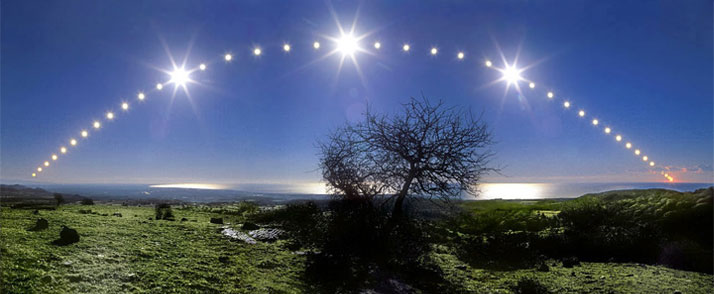 Observers view of the ecliptic below Zenith  Zodiac in a float  About Time 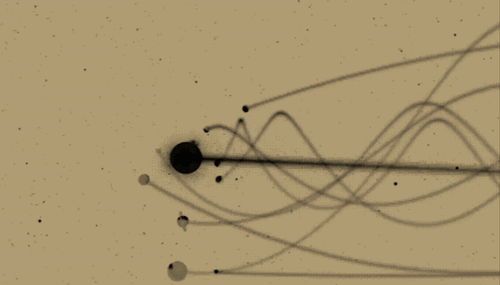 The sidereal issue  Scheme of Earth path around the Sun General scheme showing the difference between Zenith and MC on the ecliptic General scheme showing the difference between the lineup of cusps according to Equal House stystem and Quadrant house system. 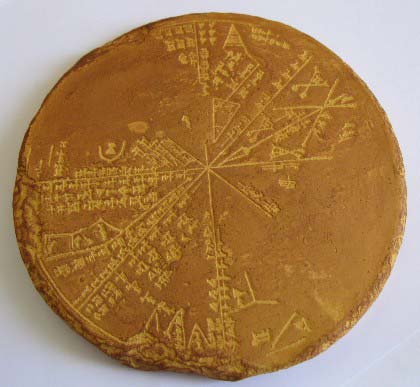 A sumerian Chart showing the use of constallation for interpretation 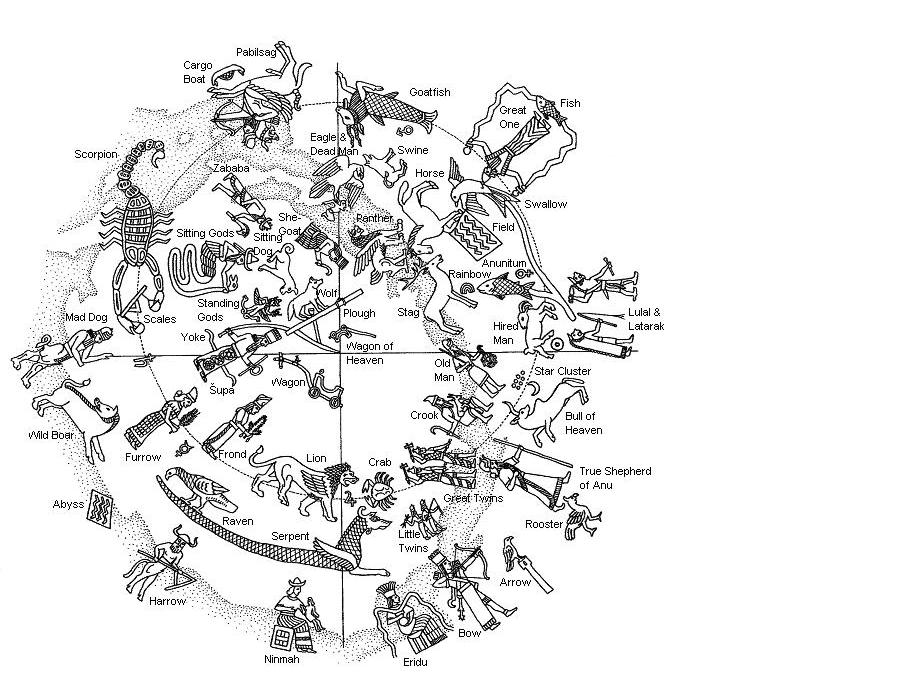 Babylonian Zodiac (Asterim).  Babylonian manual for Astrology. 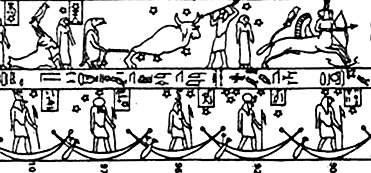 Egypt Asterim.  Egypt decan system.  Oldest Horoscope found so far.  Ptolemy 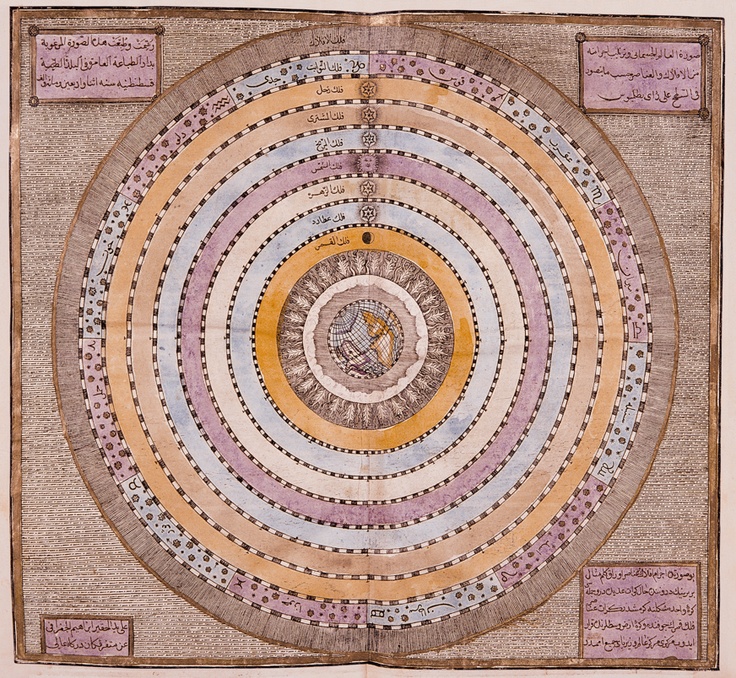 Tetrabyblos.  Verdic Signs.  Dignity. Celestsphere. 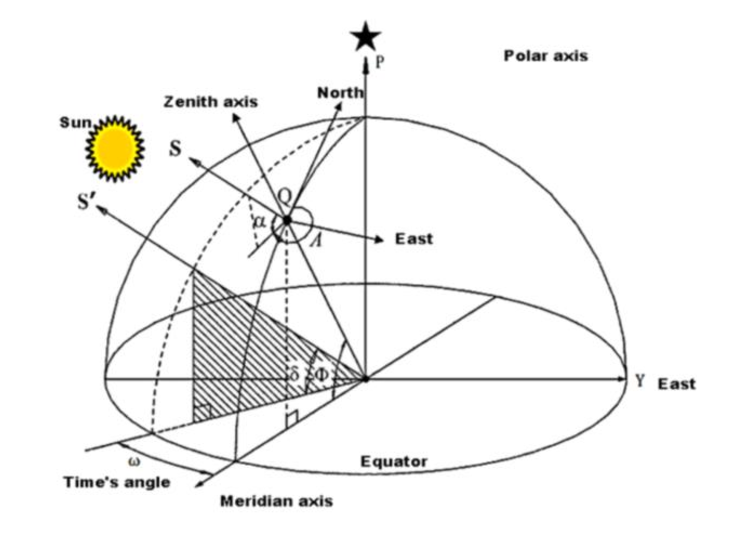 Objective view of the observer. General scheme showing the difference between Zenith and MC on the ecliptic General scheme showing the difference between the lineup of cusps according to Equal House stystem and Quadrant house system.  Vettius Valens  Porphyry  Regiomontano  Giovanni Antonio Magini the likely creator of the Placidus system.  Spring 2020 and History  Tides of the cell.  The Gravity code |
|||
| Contact | Payments & Donations | |||
|
C.T.Definiotions +1-704-905-8459 c.t.definitions@gmail.com |
Paypal |
|
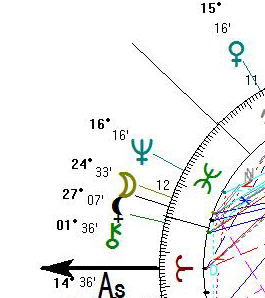 |
|
| Cashapp |
|
|||
|
|
|
Venmo |
|
|
| @C.T.Definitions 2019 | ||||